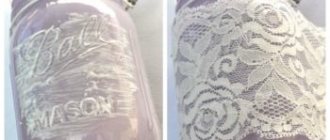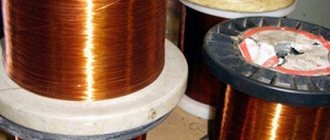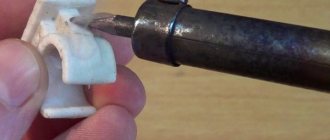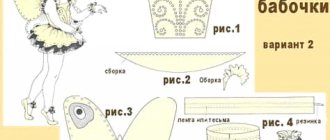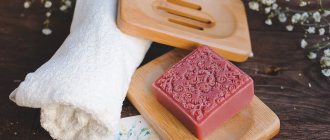Thermos is an indispensable attribute for travelers and fishermen, athletes and housewives. It is often used in everyday life. Sometimes the situation arises that there is no thermos at hand and there is not the slightest opportunity to purchase one. And you still want to drink a hot (note, not intoxicating) tea or coffee while camping! There is a way out - you can make a thermos with your own hands from improvised materials.
I think that even a child knows the circuit diagram of the device. The thermos is designed on the principle of a Dewar flask. That is, a smaller vessel is placed in a vessel of larger diameter and conditions are created between them to reduce thermal conductivity (vacuum). Of course, we cannot create a vacuum in our man-made thermos, but we can reduce thermal conductivity. Let's make a thermos from improvised materials. Namely from ordinary plastic bottles.
Necessary materials
In this article we will look at two ways to make a thermos at home. Everyone can easily find the materials that will be needed to make a thermos in the first way at home.
- Bottle. The easiest way to make a thermos is from a glass bottle. You can, of course, use a plastic container, but it is not recommended. The main criterion in choosing a bottle remains its volume. It should be noted that it is quite difficult to find a glass bottle with a tight-fitting lid, which is very important for a future thermos.
- A few paper towels or scrap newspapers.
- To reduce thermal conductivity, use black electrical tape (you can replace it with tape).
- Regular food foil for baking.
- Regular scissors.
For the second - more complex - method you will need the following materials.
- Two plastic bottles with volumes of 0.5 and 1 liter.
- Regular food foil.
- Polyurethane foam.
- Scotch.
- Knife.
Separately, it is worth noting a number of well-known insulation materials that can be used in the process of making a thermos : foam chips, toilet paper, sawdust and even wool in any form. Most of these materials do not tolerate contact with water well. Therefore, when using them to make a thermos, it is necessary to carefully pour the liquid into the vessel.
You cannot pour liquid into a plastic bottle whose temperature is more than 80 degrees Celsius. At high temperatures, plastic not only begins to melt, but also releases harmful substances into the liquid.
What it is
The question may seem strange, because each of us has seen a thermos. However, in order to begin the process of making a thermos, you need to know how it works. The thermos is based on the principle of Dewar flasks.
A smaller container is inserted into a larger container, and then a vacuum is formed between them.
As is known, heat is transferred by molecules when they collide in space or environment. If there are no molecules, then there is no heat transfer.
Obviously, the absence of molecules is a vacuum. This is what causes low thermal conductivity.
Heat is also transferred using infrared radiation. The inner surface of the thermos reflects heat precisely because it “does not receive” infrared rays.
Of course, there is no need to talk about the formation of a vacuum in a homemade thermos, but it is quite possible to create conditions under which the thermal conductivity of the vessel will be low.
DIY food thermos
If you like long walks or bike rides, winter fishing or mushroom picking, then you will need a thermos for food, which is quite possible to make with your own hands. It is not difficult to build a container that retains heat well.
To do this you will need:
- plastic jar with lid;
- a piece of polyurethane foil insulation;
- tape or tape;
- scissors or sharp knife.
The insulation should be cut according to the dimensions of the existing can - the lid, bottom, and height of the can. It is important to make a reserve for the lid that matches its height - this will help keep the heat in such a thermos longer. Carefully cut out all parts with scissors. Attach the circles with tape to the bottom and lid of the jar. Close the sides in the same way. It is better to put food in such a thermos wrapped in foil. Or you can put small bottles of baby food and feel free to go for a walk. You can also sew a special bag from thick fabric with handles (for example, from old jeans) or tie it with thread. Thus, the thermos for food will have a more convenient and attractive appearance.
Specifics of children's containers
A thermos is in great demand when the temperature outside is different from that of baby food in the container. When using it, the mixtures will have the optimal temperature for the required time, and all beneficial properties will be preserved. It is also able to protect the bottle from dust and damage.
The bottle thermos is a real find. It is a container made of polystyrene foam, which is placed in a multi-colored case. A thermos for baby bottles is an indispensable item if you have a long trip or walk ahead. The mother will not need to think about how to choose a place and time for feeding; she will always be able to feed the baby with warm formula or milk anywhere.
In winter, when it's freezing outside, a bottle of baby food can freeze. A thermos comes to the rescue, which will keep milk or porridge warm and tasty.
Containers are spacious and can hold not one, but two bottles and additional items. Situations may arise when the baby is hungry and asks for food, but the bottle of food has cooled down. Therefore, a special container must be available. After all, infants digest warm food, which is close to the mother’s body temperature, much more efficiently.
Excessively hot food, like too cold food, can harm a child’s body. In case of a long walk or trip, a thermos for one bottle may not be enough. Many companies produce bags made of fabric that insulates heat. Such devices are capable of maintaining an optimal temperature for several hours and can hold 2-4 bottles; they have space for diapers, baby clothes, etc. A small-sized children's thermos does not take up much space. It is possible to prepare bottles of food for your child on the eve of the trip, without worrying at all about their safety and suitability of the food for consumption. A mixture of milk and water can be stored for 5 hours in a thermos.
Insulation
The key element of the design is insulation. What can be used as insulation:
- Free newspapers with advertisements;
- Foam chips;
- Polyurethane foam;
- Polyurethane foam;
- Wool;
- Wood shavings;
- Toilet paper, etc.
The simplest insulation can be balls made from pieces of free newspapers. The disadvantage of newspapers is their poor tolerance of contact with water. Foam sources: packaging of household appliances, vegetable trays. It is easy to make crumbs out of it.
Rolled polyurethane foam is also used as packaging material. Sold in hardware stores. Polyurethane foam is the same polyurethane foam, but in an aerosol can. It is an almost ideal material, but it has an unpleasant property: it expands so much that the inner vessel can become deformed, and if it is a glass bottle, it can burst. The plastic one must first be filled with water so that it does not lose its shape.
Attention! It is better not to combine glass bottles with polyurethane foam.
The main criterion for choosing insulation is the presence of a particular material. We assume that the design is disposable (or close to it) and manufacturing costs should be minimal.
A functional bag as a result of work
It is possible to assemble such a thermal bag in just 10 minutes.
The thermal bag works on the principle of a thermos - it retains heat (cold). It cannot produce cold on its own; to do this, you will need to place inside the bag cold-producing cold elements for thermal containers that you made yourself. Even a child can cope with such work, and in the end you have a mobile food cooling device. True, this does not work for long; over time, the container still loses its seal, so if you are going on a long journey, you cannot do without coolers, or buy a mini-fridge in a specialized store.
How to sew or knit a thermos case?
The time has come to reveal the secret of this. If you go for a walk with your child in the cold season, make a thermos with a dispenser, as described above. Then the drink will be warm and will remain at this temperature for a long time. But it is necessary to tie a cover on the vessel.
For it you will need:
- dark and light threads;
- hook;
- scissors.
Cast on 5 air loops, connect them into a ring, making another loop. Tie this blank with single crochets, you will get 9 of them - this is the first row. The next row will alternate between one single crochet and one increase stitch. The third is done in the same way, but two single crochets and one increase are knitted. In each subsequent row you need to increase the number of single crochets by one loop, the increase also remains in the amount of 1 piece.
This way you will knit 7 rows. To finish the bottom, work the 8th row in single crochets without adding a stitch. In this case, the hook must be inserted into the back wall of the loop from the previous row.
Also, without adding loops, you need to crochet the cover further. To do this, we use the “front relief column” pattern, alternating with the “wrong column”. We use single crochets and perform 10 rows like this. Now you need to change the dark thread to a light one, perform 6 rows with single crochets.
Take the dark yarn again and use it to knit 7 rows of embossed double crochets. Then work six rows with a light thread in single crochets. Next, there are 7 rows of embossed double crochets using dark thread.
It remains to complete two rows with single crochet and one with double crochet, using light yarn.
Tie a chain with a blue thread and pass it through the top between the posts.
Now you need to put the crocheted cover on the bottle, tighten the lacing, and decorate it with ties.
See how to sew a cover on a bottle so that it turns into a thermos. It is very convenient for keeping baby food warm. But you can sew one onto a regular glass or plastic container, thereby turning it into a thermos.
To work you will need:
- felt;
- cotton fabric;
- scissors;
- needle;
- threads;
- rags;
- polyethylene;
- felt.
The fabric structure will be four-layer, so you need to cut blanks of the same shape from felt; polyethylene; rags; cotton fabrics. They will be rectangular. The size of these parts is easy to determine; to do this, just measure the distance from the cap to the bottom of the bottle, add 1–2 cm. Reduce the layers of polyethylene and rags on two opposite sides by 1 cm.
Also cut out 4 circular pieces that fit the bottom of the bottle. It is better to immediately iron the edges of the workpieces to make it easier to stitch the layers together. Which is what you will do.
Sew a zipper on one and the other side of the four-layer fabric. This can be done either on a typewriter or by hand. Sew the bottom on one and the other side of the resulting tube.
You can decorate the cover with felt, sewing, cut out butterflies or other figures.
Making the “shell” of the box
Next, we make the shell - to strengthen the structure, we cover it with thin fabric (I used old sheets) and cover the fabric with several layers of PVA.
After gluing, we paint the box with any paint, except acrylic and nitro.
Assembling a thermos
The product is assembled in the following sequence:
- Prepare 2 plastic bottles. It is desirable that the walls are thick enough. The volume should differ by approximately 2 times, for example, 500 ml and 1 l or 1.5 l and 3 l. For the inner vessel, it is advisable to use a bottle with a narrow elongated neck to increase the thermal insulation properties. Plastic containers can only be used for cold drinks.
- Cut off the neck of the outer bottle. It is most convenient to use a stationery knife.
- Cut the outer bottle crosswise approximately in the middle to make it easier for the inner container to fit in.
- Wrap the inner container with foil. You can use adhesive tape for fastening. It is advisable to use foil tape.
- Insert the inner bottle into the top of the outer bottle.
- Fill the space between the containers with insulation. The easiest way is to fill in foam chips. If paper is used, it is advisable to first roll it into balls for ease of filling and improved thermal insulation. The insulation material must be compacted. Otherwise, not only will the containers rotate, but the thermal insulation characteristics will also deteriorate.
- Connect the components of the outer container. The easiest way to secure it is to use adhesive tape.
- Seal the area where the neck of the inner vessel protrudes. This is necessary to prevent liquid from entering the insulation.
At this point, the thermos is considered ready; all that remains is to check its functionality.
The simplest option
If it is not possible to manufacture using the technology considered, you can use an even simpler solution. For example, there is only a 500 ml bottle. It should be wrapped in foil. To ensure thermal insulation, wear 2 down socks and wrap a wool scarf. Place the product in a plastic bag and wrap tightly with adhesive tape. The efficiency will be much lower, but the heat will still remain for some time.
Useful tips
To make the structure durable and effective, you should follow the recommendations of experts:
- it is necessary to provide waterproofing, drainage, ventilation;
- Long-term operation of the greenhouse can only be counted on if all standards are observed during construction;
- the walls must be made of durable material and, when installed from the inside, be thermally insulated;
- For roofing, you should choose the most durable materials.
If you like to grow exotic plants, but the climatic conditions of your region do not allow this, then a thermos greenhouse will be an excellent solution to this issue. After considering all the stages, principles of construction and installation of an underground thermos greenhouse with your own hands, as well as how and from what it can be built with photos and video examples, almost everyone will be able to build such a structure. By choosing the right site, location, building materials and following construction technology, you can create a building in which the temperature will be above zero even in severe frosts. This will allow you to grow not only vegetables, but also berries and flowers.
Author: Vladimir
Making a plug
Sometimes, when the original mechanism fails, people have a question: how to make a stopper for a thermos with your own hands? For this you will need:
- vice;
- aluminum foil;
- Styrofoam;
- cling film.
The easiest way is to bring an old cork back to life. It is enough to simply steam it, holding it in a vice, and keep it this way until it cools completely. Then you should wrap the plug in foil - this will save it from destruction under the influence of high temperatures.
And to make a new stopper (preferably before making a thermos with your own hands), you will need a piece of foam plastic. An element of the required size and shape is cut out of it, which is covered with cling film to prevent it from falling into the liquid.
If such a plug is pushed out by a thermos, then it will be enough to pierce it through with a syringe needle. It is advisable to make the hole in the center, otherwise the plug may become deformed.
Inner vessel material
The advantage of a thermos made from two plastic bottles is its phenomenal impact resistance. They can even play football. This is where the advantages end. Do not pour boiling water into a plastic bottle.
Firstly, it is deformed, and secondly, harmful substances are released. The maximum water temperature should not exceed approximately 80 degrees.
To compensate for this disadvantage, you can use a glass bottle. It is better to pour boiling water into it in two stages. First, pour a small amount and shake, and then add the remaining amount. Otherwise there is a chance that it will burst.
Building a foam refrigerator
You can make the simplest version of a refrigerator from foam plastic with your own hands in the form of a plywood box, inside of which thermal insulation is made of polystyrene foam. In some cases, for example, for portable shoulder bags - refrigerators, heavy plywood lining is replaced with lightweight PVC plastic. How to make the outer cladding is not so important, the main thing is to assemble a high-quality and durable polystyrene foam box.
The procedure for making a portable thermobox from polystyrene foam comes down to the following operations:
- We cut out the foam sheet material to the size of the future refrigerator;
- We glue the polystyrene box together and line it with heat-reflecting material;
- We assemble a wooden box from plywood and place a heat-insulating foam casing inside the box.
If the refrigerated box is intended to be transported in the trunk of a car, it is necessary to reinforce the corner joints externally using an aluminum corner. As practice shows, during transportation, the wooden box of the refrigerator is often damaged at the outer corners and the seams come apart.
How long does the effect last?
The operating time of a homemade cooling system depends on several factors:
- properties of the material from which the device is made;
- insulating characteristics of the bag;
- box volume;
- initial temperature of products;
- rationality of layout.
On average, the effect lasts 10-12 hours, provided that the entrance to the box is hermetically sealed. A large bag will require 2-3 batteries.
They need to be placed in this order:
- the first is laid on the bottom;
- the second is placed between the products in the center of the box or on top.
The more sources of cold contained inside, the longer the temperature acceptable for food is maintained.
A DIY cooler bag can be made within one hour or even a few minutes, if you have the necessary material on hand. In the process of gathering for an active pastime in nature, you can sew a useful item without delaying your friends and family. The thermobox will come in handy many times over when you have to go on a long journey.
Source: morrozko.ru
Homemade from a glass jar and a plastic bottle
If for some reason you still don’t have a thermos, or you have one, but it’s not the right size, then this instructional article is for you.
Of course, you can just go to the store and buy a thermos of any size, fortunately the Chinese abundance allows you to do this without any problems - the choice is great. But the trouble is, not everyone has the money for this useful gadget, especially since the price of a thermos increases in proportion to its volume.
Today, using a specific example, we’ll look at how you can make a simple thermos of any size from a glass jar.
Thermal insulation
Now the gap between the prepared bottles remained to be carefully filled with polyurethane foam. Just at home I had some Ceresit foam for the gun, which does not increase much in volume when it hardens.
Photo 3. I fill the cavity with foam between the bottles.
I did this later, when the foam had dried a little and partially came out. Locally we had to add a little more foam to the cavity. As soon as I added water, the reaction went much more smoothly, the foam was well compacted and a very elastic insulating casing was obtained.
At first I also filled the lower cut-off part of the two-liter bottle with foam, but then I decided that this was not the right move and I dug it all out.
In the car
A personal car has long been considered not a luxury, but a convenient means of transportation. If the dacha plot is not very far from the city or the family is small, then large supplies of food for the country house are not made. It is more difficult for those families who have children or elderly parents, if a vacation at the dacha is planned for a certain period of time.
You can learn how to make a refrigerator box from the previous part. It is worth going into more detail about a portable refrigeration device.
You need to prepare:
A sports bag is usually rectangular in shape.
There are two ways to cut out foil parts:
The pattern of the refrigerator case should be smaller in size than the bag. This will allow you to easily insert the case into your bag.
In the first option for making a refrigerator, you need to put together the finished parts - like a construction set. You need to take regular or special tape and strengthen the corners of the foil cover.
The second version of the cut parts is folded in parts. Tape is applied to the side seams inside and outside.
The walls of the container must be in firm contact with each other, otherwise the “thermos” will not retain the created microclimate.
If the thermofoil does not bend well, then the lid can be made separately. You need to cut it off from the base and attach it to the top of the bag using tape.
Simpler design
Let's say you only have a 0.5 liter bottle. Wrap it in foil. We put on two down socks or wrap them in a woolen scarf. We put on a black plastic bag and cover it with tape. The result will be a thermos from the “better than nothing” series.
What is needed to make a thermos
- For the first design:
- A pair of plastic bottles (0.5 and 1, or 1.5 and 3 liters);
- Aluminium foil;
- Insulation (see above);
- Scotch;
- Scissors;
- Preferably a knife.
- For the second design:
- Bottle 0.5 l;
- Two down socks or a wool scarf;
- Black package;
- Scotch;
- Scissors.
- "Thermos" from a flask
If you have a small flask for alcoholic drinks, then in winter it can serve as a good thermos. The volume of such flasks rarely exceeds 250 ml. However, when thirst overcomes, even a glass of water can significantly alleviate your situation.
Pour warm water into the flask, but not boiling water, so as not to get burned. We put it in a shirt or vest pocket with many pockets. We put on a sweater and a winter jacket on top. Thanks to its flat shape, concealed carrying does not pose any particular problems. The water temperature will always be equal to your body temperature, which is very good in the cold season. You won't be able to get warm, but you'll quench your thirst easily.
